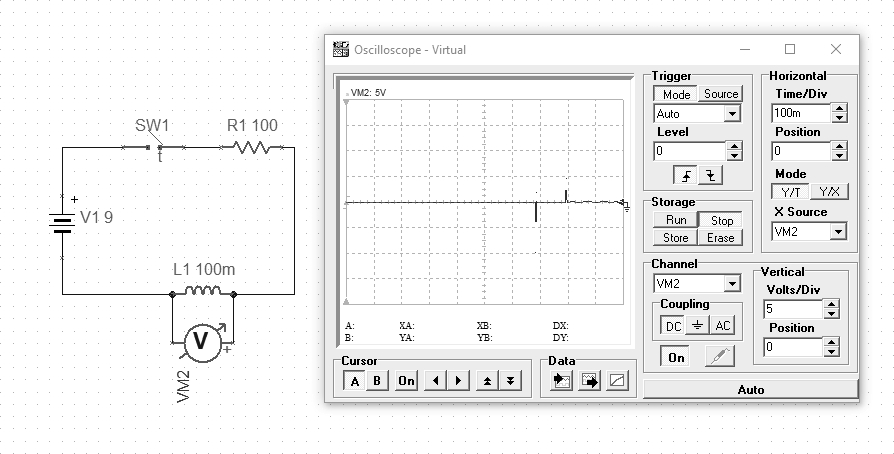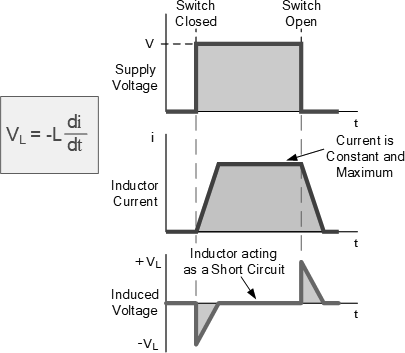Coil
Energy in a magnetic field
[209] Just as a capacitor works by storing energy as an electric field, an inductor stores energy as a magnetic field. The energy stored in the coil is calculated in terms of current. The capacitor acts as an insulator of the circuit while the inductor acts as its conductor. The coils have inductance expressed in henry [H]. The coils are plugged into the circuit in series with the powered device. The coils are characterized by a maximum current, as their windings have a certain resistance, therefore the flow of current causes a voltage to accumulate on them, which gives the power released by them. Adjusting the operating parameters is to avoid overheating of the coil.

The above example (with a cyclic trigger) illustrates the property of the coil of the occurrence of a reverse electromotive force. If we apply voltage constantly, the coil will behave like a piece of wire. However, if there are changes in the intensity of the current flowing through the coil, then we can observe the signal jumps on the measurement.

“The use of electric transformers and inductors in the electrical sphere is such a common practice that it is difficult to imagine a world without these devices. When the property of inductance was discovered in the 1830s by Joseph Henry and Michael Faraday (separately and on different continents), the technology was revolutionized. Inductance was first discovered by Faraday in a simple but strange way: he wrapped a paper cylinder in wire, fastened the ends of the wire to a galvanometer (an electric current measuring device), and moved the magnet to and from the cylinder. The galvanometer reacted by revealing that it was producing a tiny current. ” [201]
Examples available at https://github.com/michalasobczak/simple_hpc/tree/master/SeriesPartOne